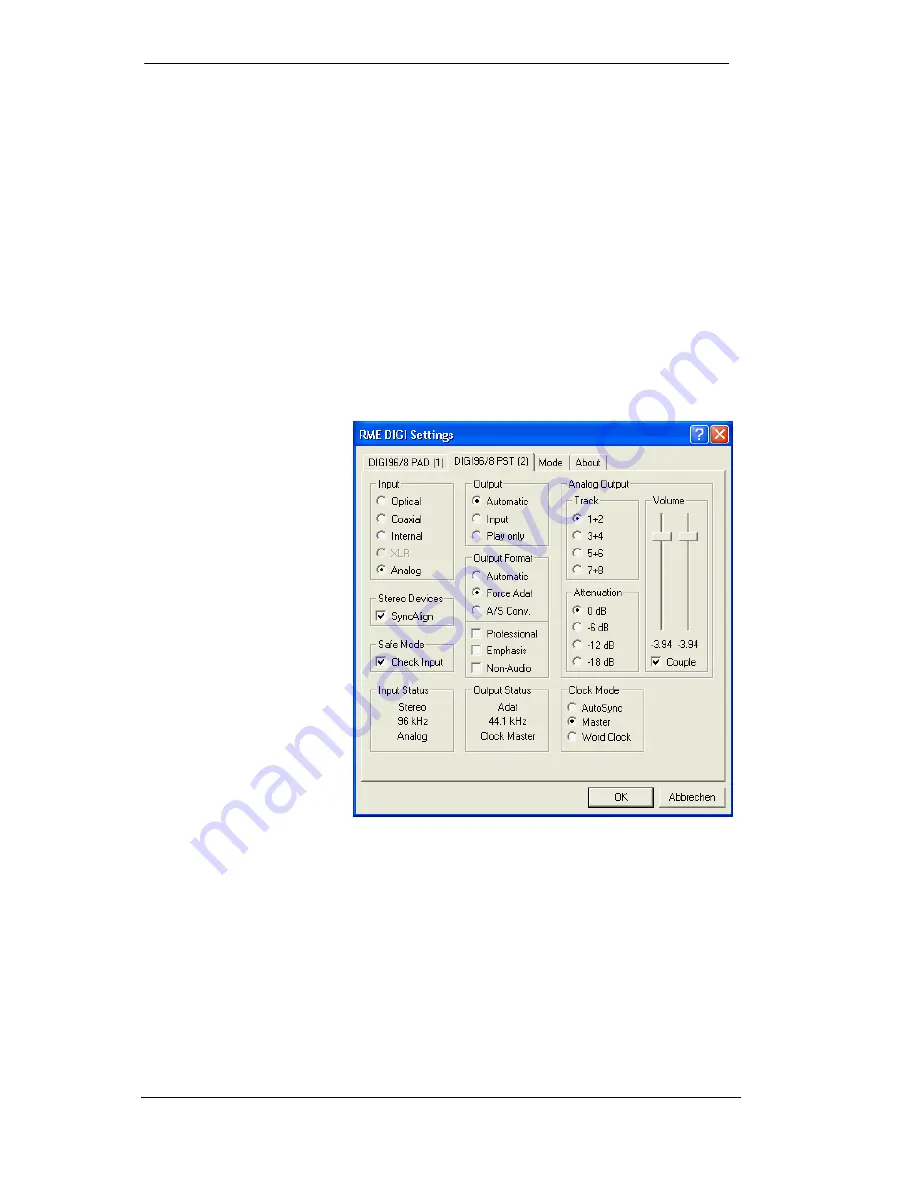
User's Guide
DIGI96/8 PST © RME
12
9. Configuring the
DIGI96/8 PST
9.1 General
The hardware of the DIGI96 series includes a number of helpful, well thought-of, practical func-
tions and options, which allow you to configure the behaviour of the card to suit many different
requirements. Through ‘Settings’ you will gain access to:
•
Input selection
•
Output operation
•
Output Channel Status
•
Synchronization behaviour
•
Input and output status display
The display of the current input frequency and format is updated every 0.5 seconds. When
choosing an input with a signal including errors or without any input signal the statement ‘No
Lock’ appears, in vari-speed operation or with sample frequencies widely out of tune ‘Out of
Range’ is shown. If the current signal has SPDIF or AES/EBU format then 'Stereo' is displayed,
with ADAT format ‘ADAT' is shown.
The three states of the output
selected through the choicebox
‘Output’ control the monitoring
behaviour of the card.
‘Automatic’ sets the normal
mode where the input signal
reaches the output only whilst
recording. In this mode, when
starting a recording, feedback
occurs very often when using
digital mixing desks. ‘Play only’
solves this problem by making
sure that the input signal is
never passed to the output.
After selecting ‘Input’, the input
signal appears at the output
whenever playback is not
active.
DIGI96/8 PST
saves a continual record
standby mode and can switch
itself to monitoring without
active software. As switching
between the inputs is carried
out in realtime, stepping
through the inputs gives a fast check of the incoming signals.
Settings should not be changed during playback or record if it can be avoided, as this can cau-
se unwanted noises. Also, please note that even in 'Stop' mode, several programs keep the
recording and playback devices open, which means that any new settings might not be applied
immediately.
Specific information about the right choice of the output's Channel Status (output format Con-
sumer / Professional) can be found in chapter 11.



























